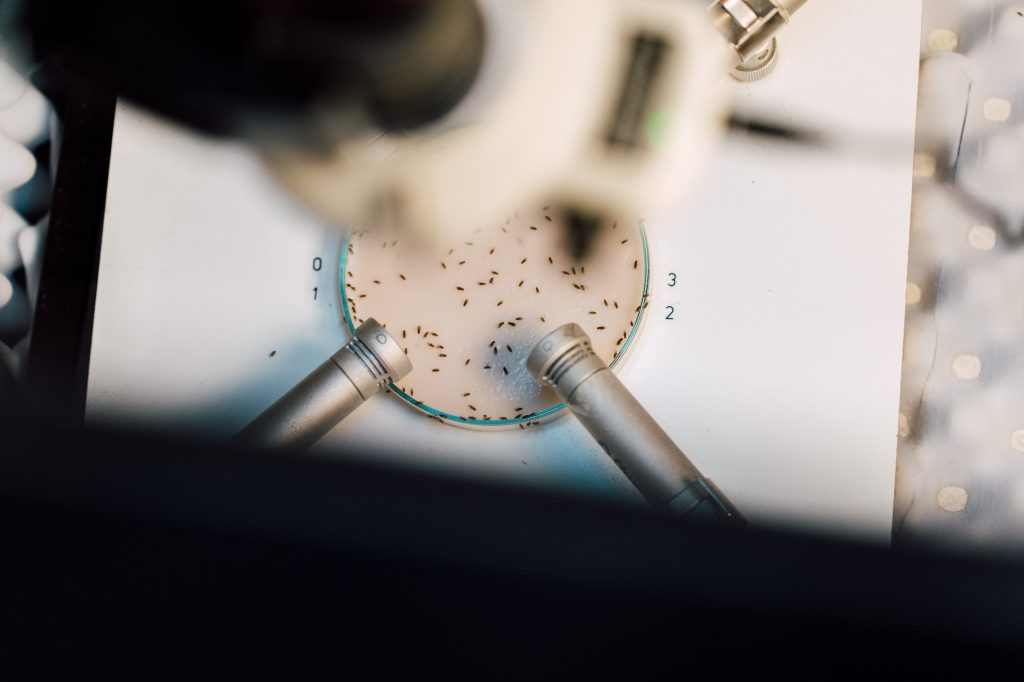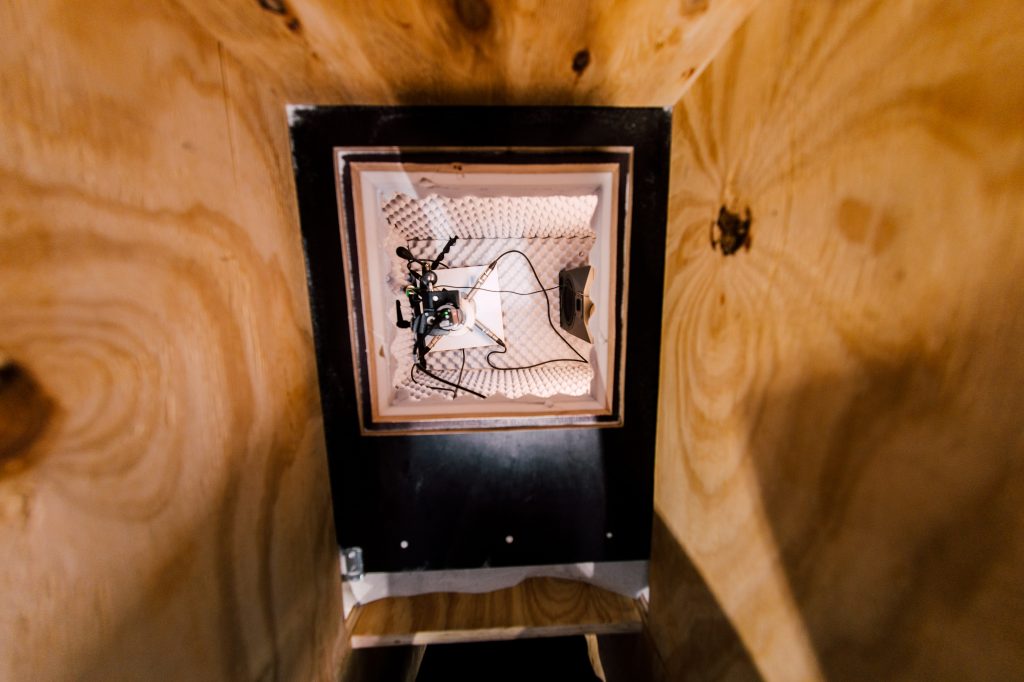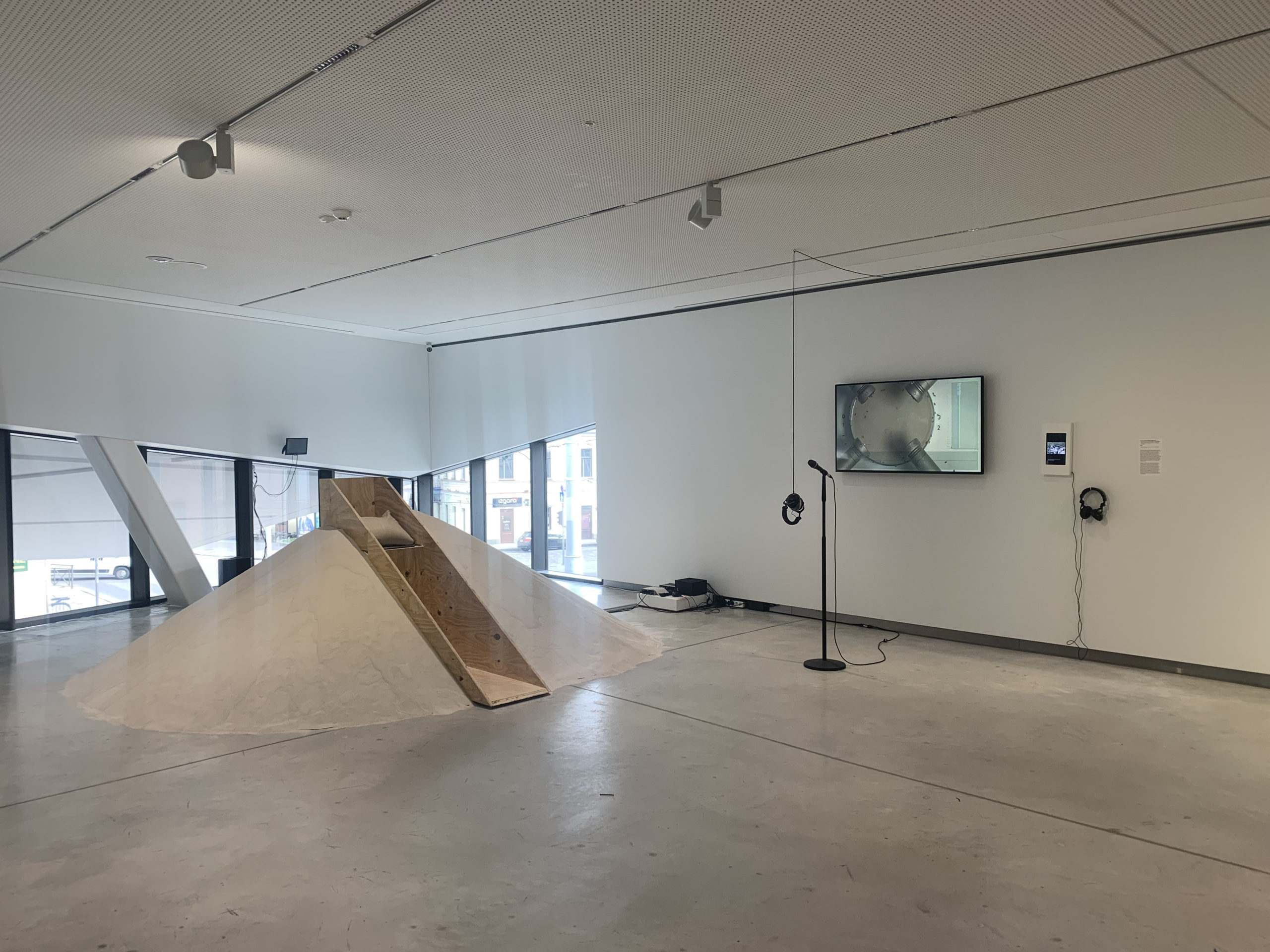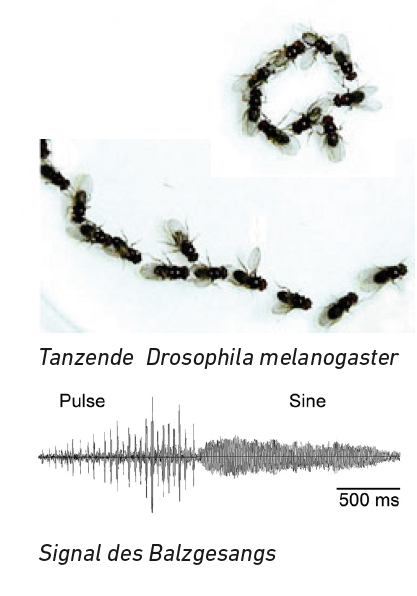
Project Description in German
With our Drosophila Karaoke Bar, we want to look at one of the most widely used model organisms in medicine and brain research: the fruit fly, Drosophila. While humans in their everyday life keep away from flies, science uses these creatures for experiments. Drosophila are cheap, they reproduce quickly, have enough genetic resemblance to humans to study genetic diseases and a brain small enough for us to study.
One striking and little-known behaviour of flies are their mating songs. Fly males sing to females by vibrating their wings in rhythmical patterns. With our karaoke bar we want to offer a possibility to sing with flies, to experience their nature and culture in a shared sensual experience.

Can our karaoke bar bring items from our high-tech culture back to our environment? Does it allow the audience to immerse themselves into science? Our attempt to invite people to sing with flies offers a performance to experience a holistic approach to scientific investigations. The setup discusses ecological questions: to which degree do we need to separate the habitats of humans and flies to feel comfortable? Which measures are necessary to make their faint songs audible to humans? How does a laboratory environment affect the behaviour of flies? Under which conditions are we able to enjoy their presence?
The installation invites visitors to establish a direct exchange with fruit flies through a technical interface. A software is transforming human speech into signal that can be perceived by flies. It allows auditory feedback between people and animals. For blending human and fly songs we will use a special signal processing vocoder provided by Berd Edler of the Fraunhofer Institute for Integrated Circuits.
Visitors are requested to talk and sing with flies. Birgit Brüggemeier, Neuroscientist and fly researcher explains in a video the meaning of the separate constituents of fly song. She informs listeners about the syntax and semantics of Drosophila songs, in order to give the visitors a better understanding of fly communication. The video encourages the visitors to sing and speak to flies.



A sound visualization in 2D enhances the auditory perception of the sphere of the flies with a visual monitoring of fly songs on a screen: the location, amplitude and pattern of the sound sources shall help the performer to identify its influence on the fly behaviour.
A large pile of sand covers with its weight the habitat of flies to isolate their buzzing against the noise of humans shows. The massiv sand pile repesents the sensual and the semantic gap between a fly and a human.


In a future version, another set of headphones offer an ‘anthropocentric’ view point on flies: we track the occurring frequencies of our fly community, constituting in courtship songs and flight sounds (differing from about 1 octave). A specially designed software enhances the real-time sounds by modulating them with previously found chords. This software raises the question: are there more hidden patterns of communication within fly songs than described by science yet?
With Karaoke Bar we learn to become silent and careful to be able to hear the voice of Drosophila. Our setting offers a possibility to communicate with Drosophila at eye (ear) level. By concentrating on Drosophilas proper way of expression (what kind of signals are they sending to their surroundings? How are they communicating? How does it sound if they are approaching their comrades? What do they want to negotiate? What are our common windows of perception?), we want to circumvent an anthropocentric world view. The installation not only translates the signals of drosophila (sonifying and visualizing, as it was done earlier), but allows a shared practice in a direct feedback situation, offering a novel sensual experience.
Ursula Damm (Artist, Project Lead)
Birgit Brüggemeier (Neuroscientist, former Fly Researcher)
Felix Bonowski (Programming, Interface)
